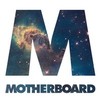French presidents can’t help themselves from building ideologically suspect museums about the Republic; American presidents: factually impoverished museums (or “libraries”) about themselves.Consider this: Gerald Ford’s pile in Grand Rapids, Michigan has exactly 2000 square feet for every month America’s only never-elected head of state spent in office.If the Nixon Presidential Library and Museum, completed in 1990, always seemed the most propagandistic of the lot, that’s only because the old man left his curators with an unmatched bounty to rationalize and obfuscate (some notable runner-ups can be found in Little Rock, or Simi Valley, or Austin).It was also the only one on a permanent federal blacklist: When Tricky Dick left office in 1974, he tried to destroy his White House materials, including those tapes that’ve become the journalistic gift that keeps on giving.In response, Congress passed a law—the Presidential Recordings and Materials Preservation Act (PRMPA)—that mandated that the Nixon archives remain in government possession, and no farther than 50 miles from Washington, D.C.After years of lawsuits, which loyalists carried on long after Nixon’s death in 1994, negotiations completed in 2007 turned over the formerly private Richard Nixon Library and Birthplace to the National Archives and Records Administration. A few years earlier, Congress had passed an amendment revoking the 50-mile rule of PRMPA. Daddy’s files were coming home!With the federal takeover, however, the old whitewashing Watergate gallery would have to go. Opened yesterday, the Nixon Library’s new permanent Watergate exhibit is a warts-and-all (or rather, all-warts) view of the scandal. If revolutionary for presidential-library truthiness, the exhibit doesn’t really offer anything that hasn’t already morally outraged the good citizens. (We’ll have to wait for the Kissinger Secretarial Repository and Tomb for that.)What it does feature is the bygone tech of ’70s chicanery: the lock picks used to break into DNC offices; a light-up map of the Oval Office with locations of the hidden tape recorders. Here the head curator shows us around:In case you can’t make it to Yorba Linda, the Library’s website has an amusing online collection of documents and videos and, of course, tapes—including such favorites as “If it blows, it blows” and “This is a guy who’ll get out and tear things up.”
Advertisement
